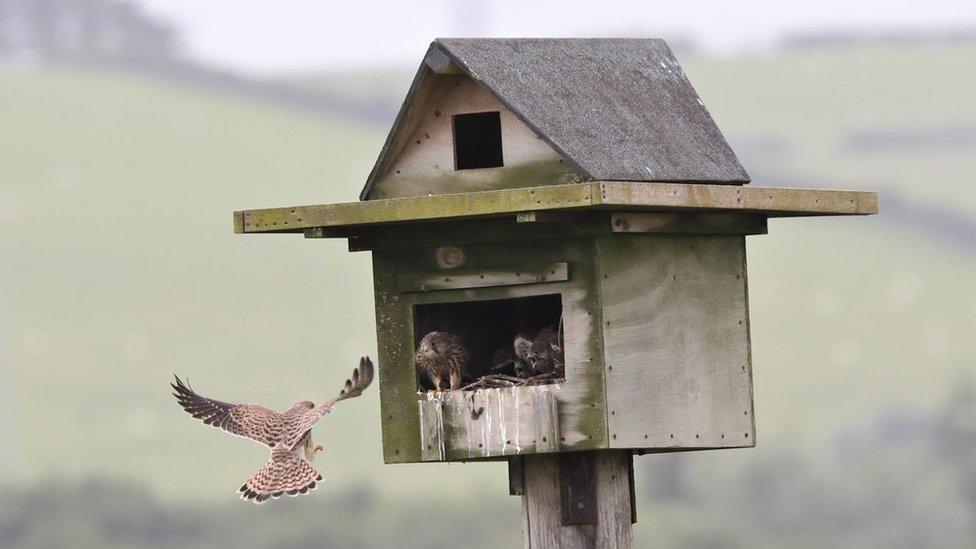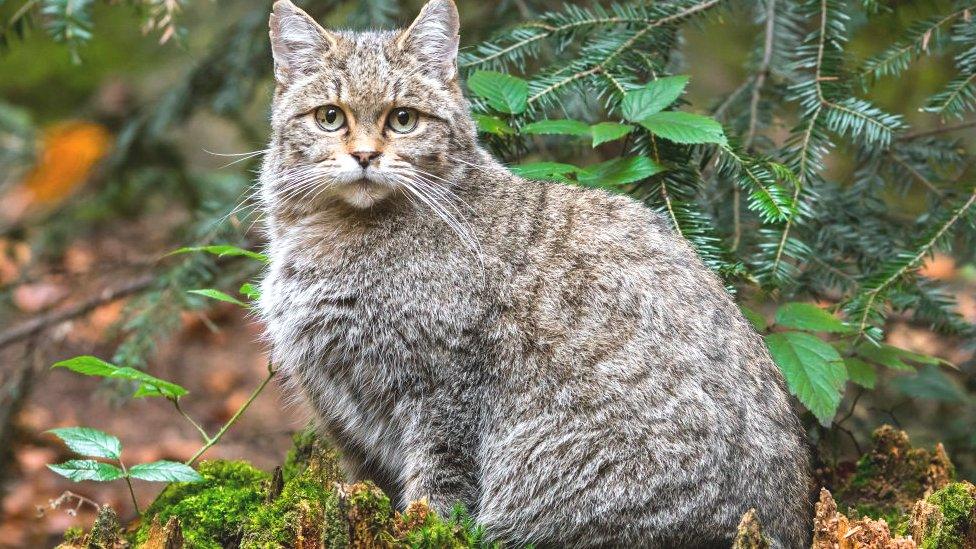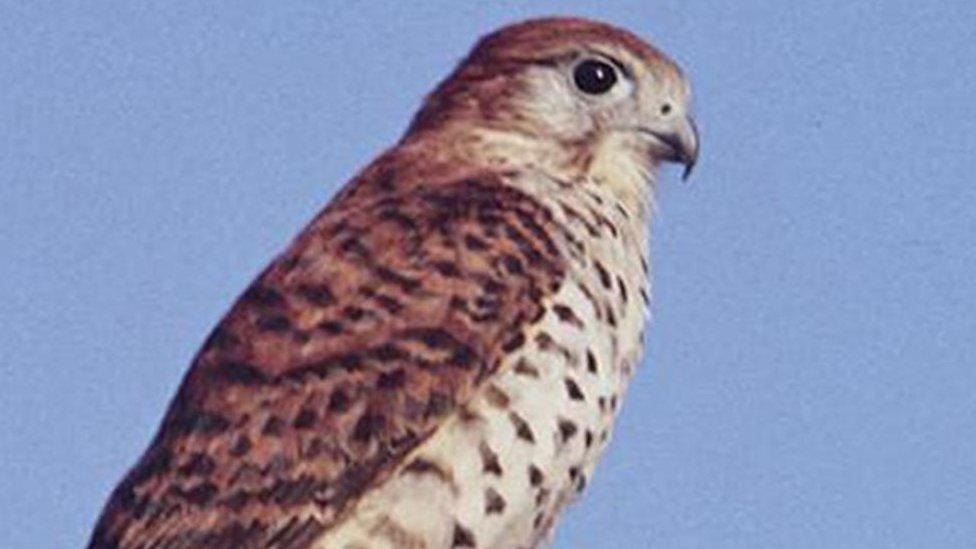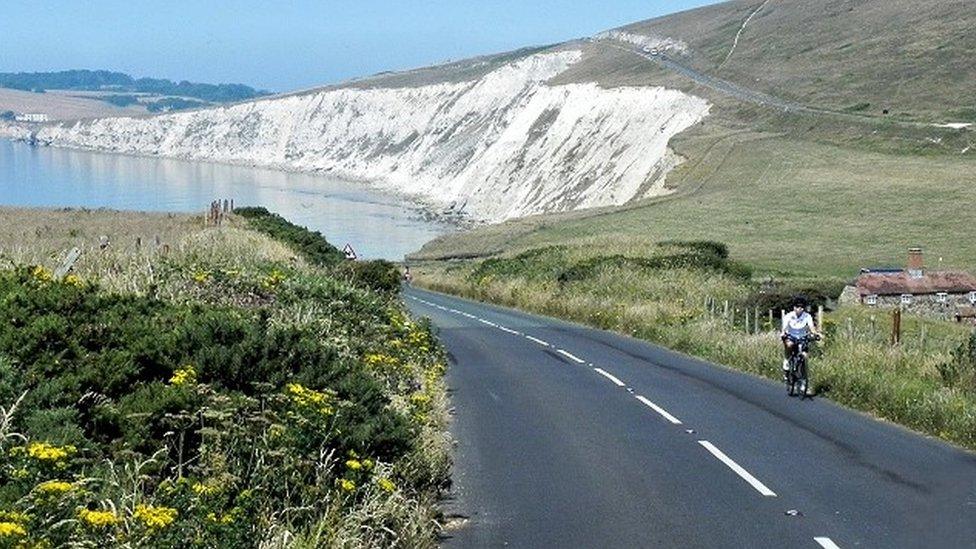North Devon volunteers install nest boxes for kestrels
- Published

Kestrels are on the amber UK conversation list because of a decline in their breeding population
Farmers and landowners are trying to stop the decline of kestrels in North Devon by putting up nest boxes on their land.
Thirty boxes have been installed by the North Devon Unesco Biosphere, external project.
Kestrels are on the amber UK conversation list, external because of a decline in their breeding population.
In Devon, recent surveys have revealed areas in which breeding kestrels were recorded have dropped by two thirds between 1977-1985 and 2007-2013.

Kestrel numbers have been impacted by a lack of grassland and nesting sites
Mike Moser from the project said: "Three things are affecting kestrels.
"Lack of rough grasslands where voles and other things they feed on live.
"Secondly, good nesting sites, we've lost a lot of hedgerow trees around the county and the other problem is rodenticides which are quite widely used in the farming environment."
Kestrels do not build their own nests, but instead use old or disused nests or holes in buildings, and as a result like to use the ready made nest boxes.
Carrie Wood, of Mudhouse Farm, who is one of the volunteers, said: "We wanted to do our bit for nature, we've been involved with the North Devon Biosphere more and more in the last few years.
"It's an ideal opportunity as we do have some grassland near to us."
The main breeding season for kestrels is April until the end of July and the biosphere project hope to see an increase in numbers by the end of the summer.
Related topics
- Published1 March 2021

- Published9 October 2020

- Published19 June 2019
